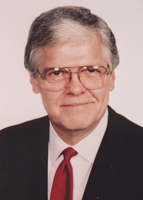Philip E. Cryer, MD

Philip E. Cryer, MD, the Irene E. and Michael M. Karl Professor of Endocrinology and Metabolism in Medicine, is a respected translational investigator and educator who discovered the physiological mechanisms that normally prevent or rapidly correct hypoglycemia and determined how those go awry, leading to clinical hypoglycemia, in people with diabetes. He seeks to continue to uncover the mechanisms of that pathophysiology and to learn to lower the barrier of hypoglycemia in diabetes.
Cryer’s research has been recognized by the Banting Medal for Distinguished Scientific Achievement of the American Diabetes Association, the Claude Bernard Medal of the European Association for the Study of Diabetes and the Novartis Award for Longstanding Achievement in Diabetes. His training of diabetes investigators was recognized by the Albert Renold Award of the American Diabetes Association. He has held RO1 support from the National Institutes of Health for 30 years, most recently as a Method to Extend Research in Time (MERIT) Award.
Cryer is the only person in the 70-year history of the American Diabetes Association to serve as editor-in-chief of its premier journal, Diabetes, be elected its president and receive the Banting Medal.
Cryer has taught in the clinical setting since joining the Washington University faculty in 1971 and has served in important administrative roles. He served as program director of the Washington University General Clinical Research Center from 1978 to 2006 and as director of the Division of Endocrinology, Diabetes and Metabolism from 1985 to 2002.
He earned his undergraduate and medical degrees at Northwestern University in 1962 and 1965, respectively. He then completed his residency at Barnes Hospital and a fellowship at Washington University School of Medicine, and served a tour of duty in the U.S. Navy.




